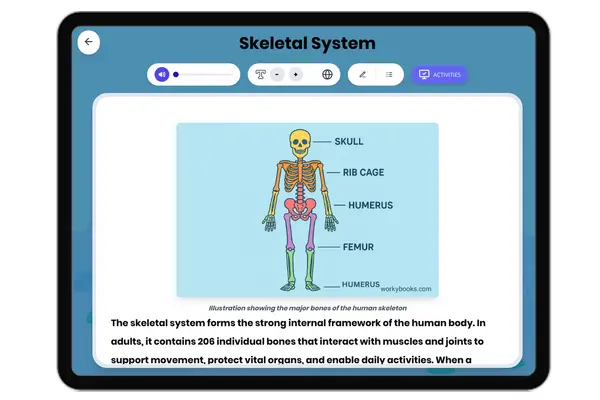Organization of the Human Body — Reading Comprehension
Premium Resource
Grades
- 5
- 6
- 7
- 8
Standards
- MS-LS1-3
PRINT+DIGITAL RESOURCE
This learning resource is available in interactive and printable formats. The interactive worksheet can be played online and assigned to students. The Printable PDF version can be downloaded and printed for completion by hand.
About This Reader
This comprehensive passage for grades 6-8, aligned to NGSS MS-LS1-3, guides students through the intricate organization of the human body. Beginning with observable phenomena such as body temperature regulation, the text explains how tiny cells combine to form tissues, which in turn create organs and complex organ systems. Students learn about the four types of tissues—epithelial, connective, muscle, and nervous—and how these structures function together. The passage introduces the concept of homeostasis, emphasizing its importance in maintaining stable internal conditions like temperature and blood sugar levels. Real-world examples and explanations link these biological processes to health, technology, and society. Key vocabulary is highlighted, and a glossary supports academic understanding. Activities include multiple-choice and writing questions, graphic organizers, and Spanish translations. The passage is also audio-integrated, supporting diverse learners.
Perfect For:
👩🏫 Teachers
- • Reading comprehension practice
- • Auto-graded assessments
- • Literacy skill development
👨👩👧👦 Parents
- • Reading practice at home
- • Comprehension improvement
- • Educational reading time
🏠 Homeschoolers
- • Reading curriculum support
- • Independent reading practice
- • Progress monitoring
Reading Features:
📖
Reading Passage
Engaging fiction or nonfiction text
❓
Comprehension Quiz
Auto-graded questions
📊
Instant Feedback
Immediate results and scoring
📄
Printable Version
Download for offline reading
🔊
Read Aloud
Voice-over with word highlighting






